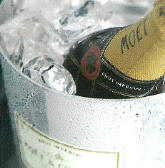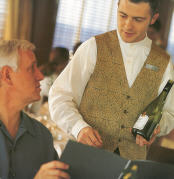 |
|
 |
 |
 |
|
|
Torshavn, Denmark |
844-442-7847 |
|
|
Awaiting Your Return From Shore |
More
than 600 miles from Denmark’s west coast
lie the Faroes, a triangle of 18 windswept islands, 17 of which are
inhabited. Only 43,625 people plus some 70,000 sheep roam these remote
lands. Much of the islands’ heritage reflects a medieval past, beginning
with the arrival of West Norwegian farmers who settled here in the 9th
century. Nearly everywhere are hints of a Scandinavia preserved through
centuries of isolation; ancient structures can still be seen in villages
clustered around old churches. Sheer cliffs and waterfalls carve Streymøy, the largest of the islands, where Torshavn is one of the world’s smallest capitals with about 14,000 inhabitants. It owes its name to one of the Nordic gods, Thor, hence the name Torshavn, or Thor’s Harbor. Visitors find interesting museums, churches, monuments and all the amenities of a modern capital. A small rocky spit, Tinganes juts out from the thriving harbor. The world’s oldest, still active parliament was founded here in the Viking age. Today it houses the Faroese government and its administration. Since 1948 the islands have been an autonomous member of the Kingdom of Denmark. Many of the attractions are found outside of Torshavn in the rugged beauty of Streymøy. Around Kirkjubøur on the island’s southern tip you can walk through fields with grazing ponies and sheep to a hamlet of only 60 residents; they live in half-timbered houses with green grass roofs, nestled on the hillside of a fog-shrouded harbor. On the north and west coasts the scenery changes to include soaring prehistoric formations of volcanic rock. Birds by the thousands populate the craggy seaside cliffs; these make an ideal breeding ground and a stopover for migratory species including gannets, auks and puffins. The islands’ climate is generally wet and windy; because of the Gulf stream current, the temperature is a good deal more moderate than the latitude might imply. It also helps to keep Faroe harbors ice-free year-round. In the remoteness of their islands, the residents still practice the traditional ring dance and recite ballads as a lively part of their cultural identity. A truly unique and tranquil setting provides an ideal place where man and nature meet. |
Awaiting Your Return From Shore |
|
|
|
|
|
|
||
|
|
|
|
|
Complimentary Spirits Await |
Return to Your Suite and Sail Away to The Next Adventure |
Entertainment and Dancing Await You |
|
|
|
|
|
844-442-7847 |







